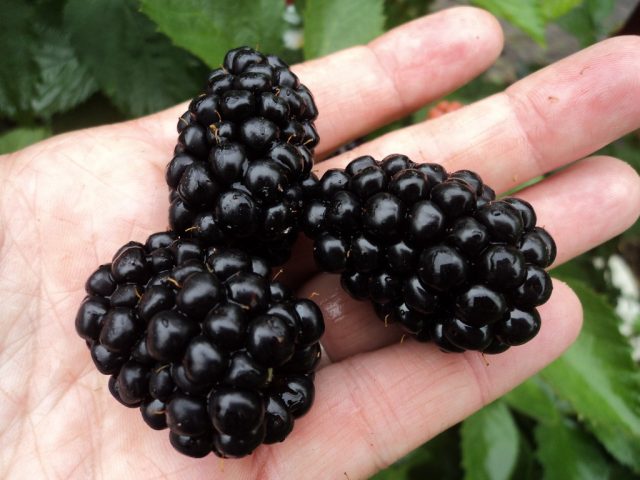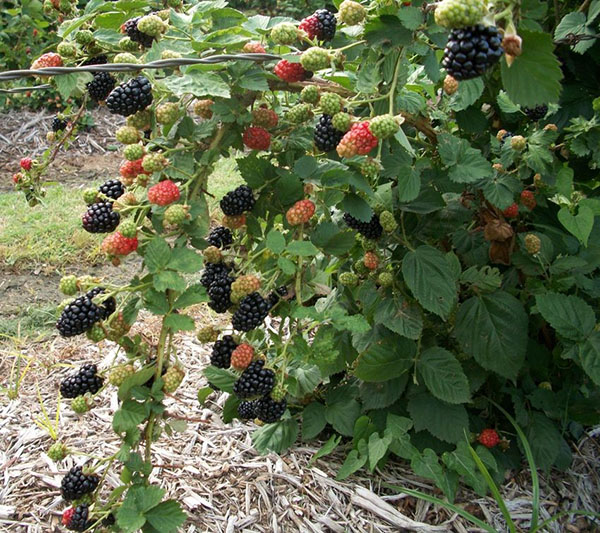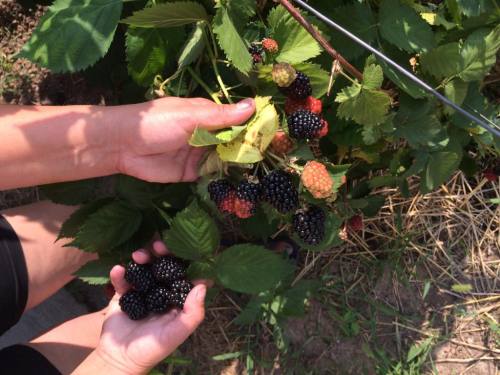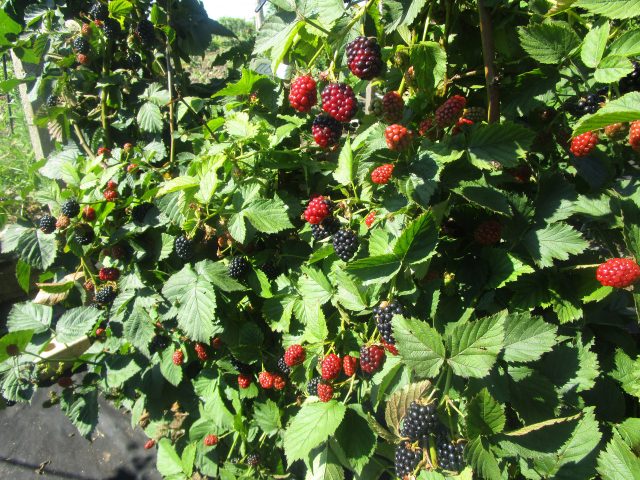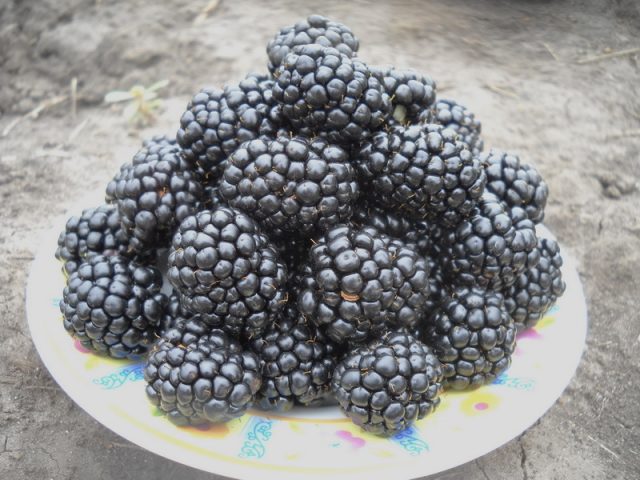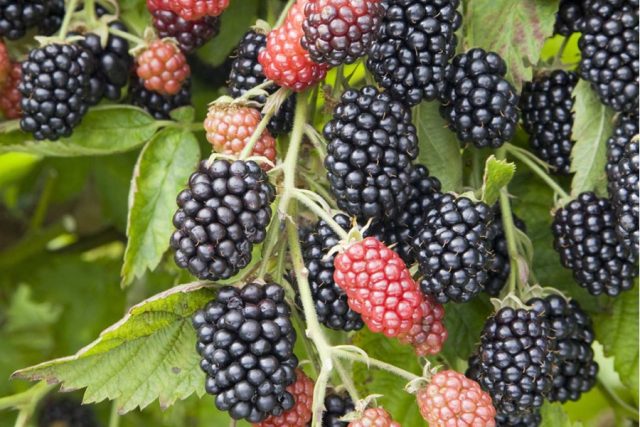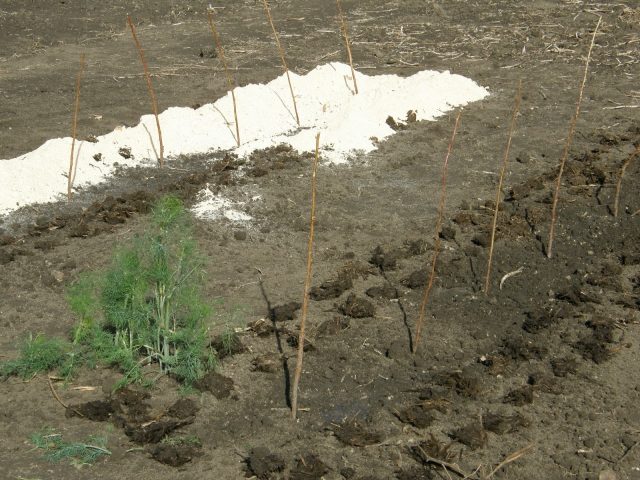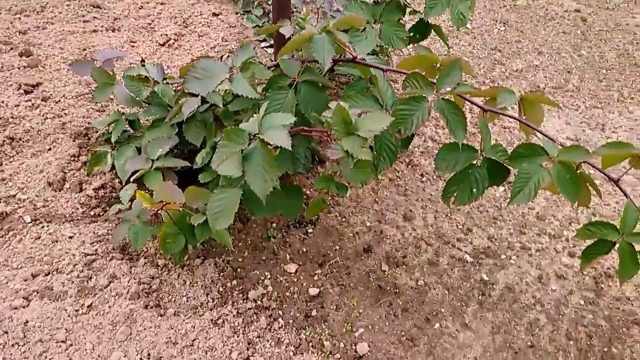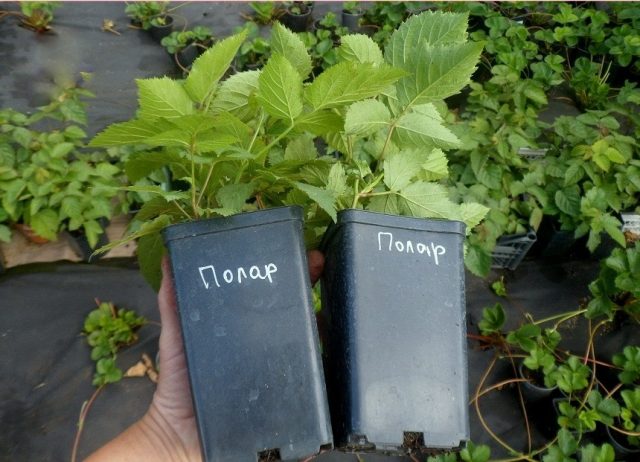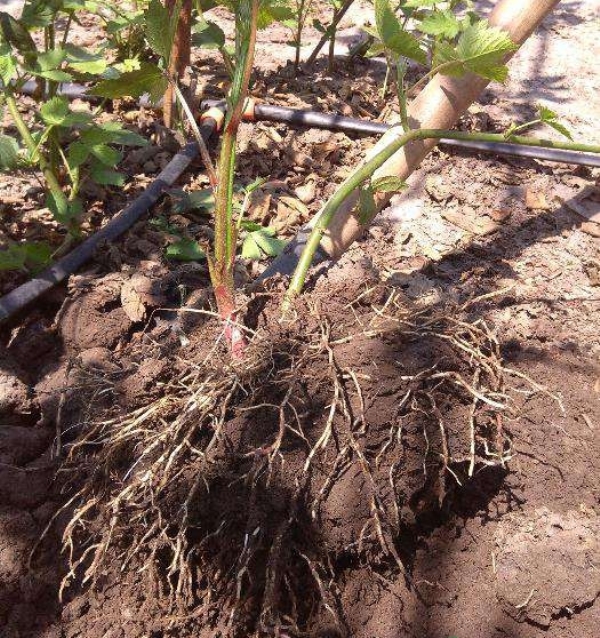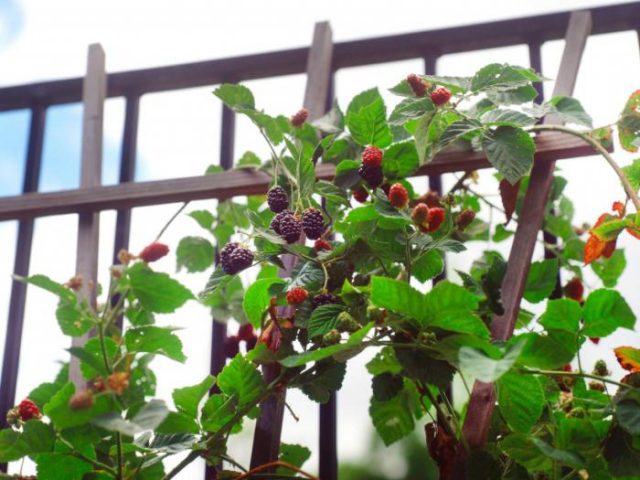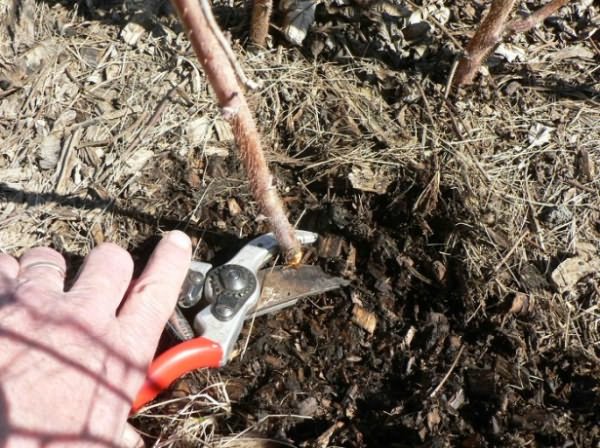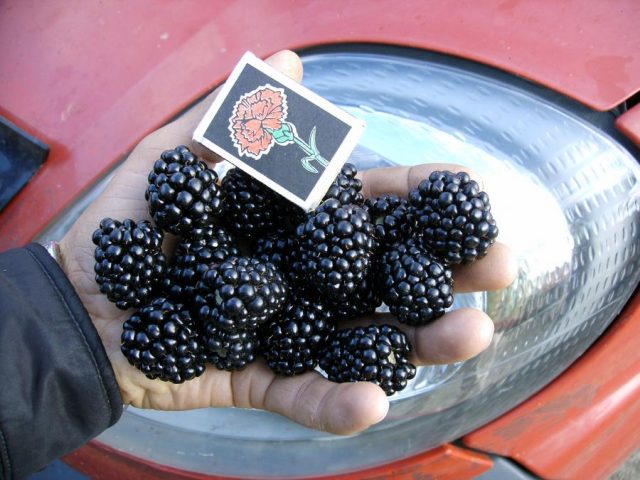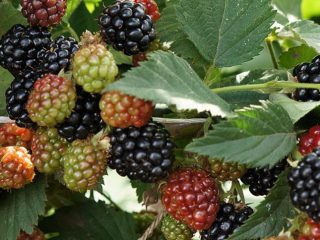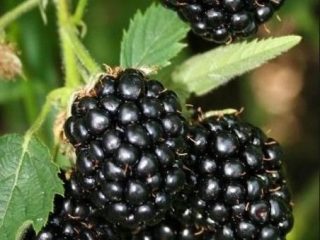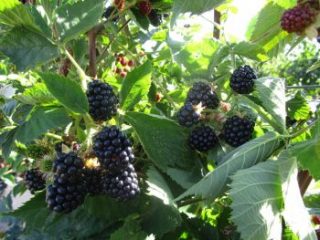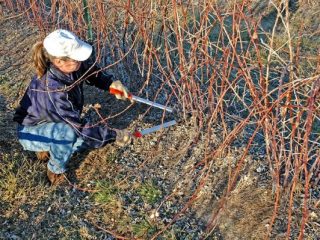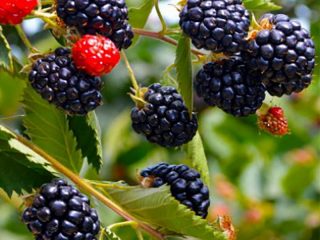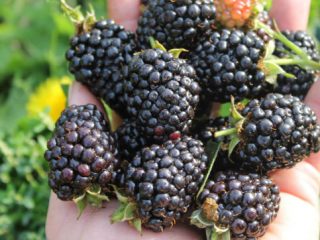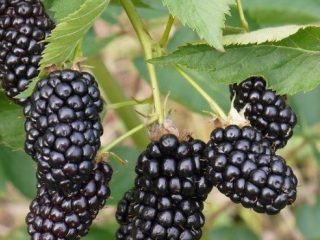Content
Our blackberry culture has been undeservedly deprived of attention for many years. Those varieties that were sometimes grown on personal plots were often tasteless, prickly, and also did not have time to ripen before the onset of frost, even in the conditions of the Middle Zone. Therefore, gardeners rejoice at every new product entering the domestic market. The varieties created in Europe attract attention. They are better suited for growing in our conditions than North American ones. It is worth paying attention to the Polish blackberry variety Polar.
History of selection
The bushy blackberry Polar was created at the Polish Institute of Horticulture, located in the city of Brzezn. It was registered in 2008.Polish blackberry breeders consider one of their main tasks to be the creation of varieties that do not require shelter for the winter.
Description of the berry crop
Initially, the Polar blackberry variety was created as an industrial variety. But thanks to the high quality of the berries and ease of care, it has taken root in private gardens and summer cottages.
General idea of the variety
Blackberry Polar is a typical bramble. Its powerful shoots grow straight, reaching 2.5-2.7 m in length in an adult bush. The tips of unpruned vines may droop - this is not a cause for concern, but a varietal feature.
The shoots of the Polar blackberry are thornless. Young canes are bright green at first, turning light brown towards the end of the season. Fruiting (annual) shoots are brown, their cross-section resembles an oblate circle.
The leaves are deep green, large, and consist of three or five segments. The root system is powerful. The Polar variety produces almost no shoots.
Berries
Large white flowers open in early May. Polar blackberries are large, dense, mostly even, weighing 9-11 g. The first fruits are the largest. The shape of the berry is beautiful, oval, the color is black, with a glossy sheen.
The taste of blackberries is sweet, but not cloying, with barely noticeable sourness and a pleasant aroma, absolutely without bitterness. This is a rare case when the tasting assessment and amateur reviews coincided; Polar berries received 4.5 points.
Characteristic
The characteristics of the Polar blackberry variety allow it to be grown both in the south and in the northern regions. Add here the unpretentiousness and high quality of the berries, which is surprising even for this crop, and you get an almost ideal variety for private gardens or industrial plantations.
Main advantages
Reviews from gardeners about Polar blackberries coincide with the description of the variety given by its creators. This may be due to the fact that it was bred in a neighboring country and is intended for cultivation on an industrial scale. For us, as for the Poles, this means easy care - on a large plantation it is difficult to pay attention to every bush.
The Polar variety is highly drought-resistant. But do not forget that the blackberry crop is demanding when it comes to watering. Do not overdry the soil if you want to get a good harvest.
Polish selection is aimed at breeding blackberries that do not require shelter for the winter. The Polar variety is one of the most frost-resistant. Experts recommend covering it only in those areas where the temperature stays below -23⁰ C for a long time and claim that Polar is able to withstand short-term drops to -30⁰ C.
But it's not that simple. Practicing gardeners claim that if powerful shoots devoid of thorns are covered (and this is not so easy), the yield of Polar blackberries will increase 3-5 times. The thing is that the lashes can withstand low temperatures well, but the flower buds freeze slightly. So think for yourself.
The variety is undemanding to soil (compared to other blackberries). The berries are transported well.
Flowering period and ripening time
Depending on the region and weather conditions, Polar blackberries bloom in early or mid-May. The first berries ripen around mid-July - the variety is classified as mid-early.
Yield indicators, fruiting dates
The Polar variety enters full fruiting in the third year after planting. Harvesting begins in mid-July and continues until the end of September.
It is believed that from one 3-5 year old bush in Polish conditions you can harvest from 3 to 5 kg of berries. The Polar variety will become high-yielding if it is covered for the winter. As noted above, its flower buds freeze, which can reduce the number of berries by 3-5 times.
Why are Polar blackberries so popular? Industrial plantings are compacted, and harvesting by machines is also possible. Neither human resources nor finances are spent on winter shelter, so growing Polar blackberries is economically justified. But in private gardens you can plant bushes more freely and cover them for the winter - this variety will give a decent harvest.
Area of application of berries
Polar blackberries, in addition to their excellent taste, do not wrinkle, store well and are highly transportable. This allows them to be supplied to retail chains for fresh consumption, frozen for the winter, and made into juices, preserves, wine and other preparations from the fruits.
Resistance to diseases and pests
The blackberry variety Polar rarely gets sick and has its own strong immunity to disease. This does not replace preventive treatments. They are especially important on industrial plantations, where growing Polar blackberries involves highly dense planting.
Advantages and disadvantages
The advantages and disadvantages of the Polar blackberry variety have been studied quite well in our conditions, despite the fact that it was bred only in 2008. The positive qualities of this cultivar significantly outweigh the negative:
- Large beautiful berry.
- Good taste.
- High commercial quality of fruits, including transportability.
- Possibility to grow crops without shelter.
- The Polar variety is one of the most winter-hardy.
- The shoots are thornless.
- There is very little root growth.
- Possibility of dense plantings.
- The blackberry variety Polar has shown itself well as an industrial crop and when grown in private gardens.
- High resistance to diseases and pests.
- Possibility of mechanized cleaning.
- You can achieve high yields by covering the shoots for the winter.
- Polar is one of the easiest varieties to care for.
There are few disadvantages:
- In the middle zone, blackberries still have to be covered.
- The shoots are powerful, which makes it difficult to prepare for winter in cold regions.
- If the blackberries are not covered, at low temperatures some of the flower buds will freeze.
- There are few root shoots, which makes it difficult for fans to propagate the variety.
Reproduction methods
The Polar variety is easy to propagate by apical shoots (pulping). True, for this you will have to work hard, tilting the selected bramble shoot from an early age. There are almost no root shoots. Green cuttings are thick and prone to rotting - you need to cut a lot of branches to get several young plants. You can divide an adult bush.
Landing rules
Planting and caring for Polar blackberries is not a problem even for a novice gardener. To make your life easier, you just need to follow the existing rules.
Recommended timing
In warm regions, Polar blackberries are planted in the fall, when the heat subsides. The bushes have time to take root and adapt before the onset of frost, and in the spring they immediately begin to grow.
Polar blackberries in the middle zone and Moscow region are planted in the spring, when the soil has warmed up a little, and there is no danger that the returning cold will freeze the soil and damage the root, which has not had time to adapt.
Choosing a suitable location
For industrial planting, a flat area is chosen to make it easier for equipment to pass. In private gardens, a sunny place protected from strong winds is suitable for the Polar variety. Groundwater should not approach the surface closer than 1-1.5 m.
The best soil is slightly acidic loam rich in organic matter.
Soil preparation
Planting holes are dug 50x50x50 cm in size, filled 2/3 with fertile mixture and filled with water. Then they are allowed to sit for 10-14 days. A fertile mixture is prepared from the top fertile layer of soil, a bucket of humus, 40-50 g of potassium fertilizers and 120-150 g of phosphorus fertilizers.
If the soil on the site is too acidic, lime is added to it. Dense soil is improved with sand, alkaline or neutral - with different doses of acidic peat, dense - with additional portions of organic matter.
Selection and preparation of seedlings
Try to buy seedlings from trusted producers - this way there is less chance that you will be deceived with the variety. The ripened bark of the Polar blackberry is brown and has no thorns. The root system must be developed, undamaged and smell fresh.
Pre-planting preparation - watering container blackberries or soaking the exposed root for 12 hours.
Algorithm and landing scheme
Industrial plantings are compacted to 0.9-1 m, and in Poland with intensive fertilizing - even up to 0.8 m. In private gardens, if possible, the distance between Polar blackberry bushes is 1.5-2 m - for yield and quality berries this will have a positive effect. Leave 2.5 m between rows.
Planting is carried out in the following sequence:
- Blackberries are shortened to 15-20 cm.
- A mound is formed in the center of the planting hole, around which the roots are spread.
- The hole is filled with a fertile mixture, deepening the root collar by 1.5-2 cm, and compacted.
- The surface is mulched and the bush is watered with at least 10 liters of water.
Subsequent care of the crop
After planting, the young plant is watered twice a week. Further care does not present any particular difficulties.
Growing principles
Polar blackberries must be tied up. Any trellis that is familiar to you will do - multi-row, T-shaped, fan-shaped. It is convenient to tie the annual growth on one side, and the young growth on the other.
The following factors influence the yield:
- feeding intensity;
- whether the blackberries took shelter for the winter;
- pinching young shoots;
- watering in dry weather.
Necessary activities
Water Polar blackberries in the absence of rain, especially in hot weather. Do not forget that the culture is moisture-loving - here it is better to pour out an extra bucket of water than to dry out the root.
The Polar variety is undemanding when it comes to fertilizing, but in its absence the harvest will suffer. In early spring, blackberries are fertilized with nitrogen, at the beginning of flowering - with a complete mineral complex, after fruiting - with potassium monophosphate. The crop responds very well to foliar feeding.
If you carefully watch the video about the Polar variety, you will see that some of the leaves are yellow, with green veins. This is chlorosis that affects blackberries on neutral and alkaline soils. She lacks iron. It’s easy to cope with the scourge by adding iron chelate, or even better, a chelate complex, to the balloon during foliar feeding.
Be sure to loosen blackberries at the beginning and end of the season. In the middle of the growing season, the soil is mulched with red peat. It acidifies the soil and, thanks to its fibrous structure, allows air to pass through well and retains moisture. In addition, peat does not give weeds germinate in large quantities.
Shrub pruning
After the shoots finish bearing fruit, they are immediately pruned. You shouldn’t delay it so that the wood on the young vines will ripen better in the time remaining before the onset of frost.
Depending on the planting pattern, 4-7 vines are left for fruiting. For better branching, side shoots are pinched when they reach 40-45 cm. All broken, weak and growing shoots in the “wrong” direction are cut out.
Preparing for winter
Although the Polar variety was created specifically as a non-covering variety, in all regions except the south of Ukraine and Russia, it is better to insulate the shoots. In areas where frosts below 15 degrees are rare, the roots can be hilled up and the lashes can be covered with agrofibre directly on the trellis. Then it remains to ensure that during possible rains with a subsequent decrease in temperature, the covering material does not turn pale.
In other regions you will have to work hard - remove the shoots from the trellis, pin them to the ground. Then build a shelter from spruce branches, straw, dry corn stalks, agrofiber or dry soil.
Diseases and pests: methods of control and prevention
The blackberry variety Polar is highly resistant to pests and diseases. In spring and autumn, the bush should be sprayed with a preparation containing copper as a preventive measure. You should not plant nightshade crops, strawberries or raspberries closer than 50 m from blackberries.
Conclusion
The blackberry variety Polar has established itself as promising, high-yielding and does not require special care. Its berries are tasty and tolerate transportation well. Polar blackberries are recommended for cultivation in private gardens and as an industrial crop.
